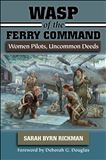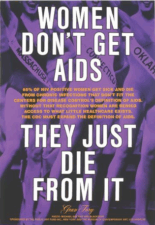 WASP of the Ferry Command: Women Pilots, Uncommon Deeds
WASP of the Ferry Command: Women Pilots, Uncommon Deeds
Sarah Bryn Rickman
The following story is an excerpt from Sarah Byrn Rickman’s WASP of the Ferry Command: Women Pilots, Uncommon Deeds, out now from University of North Texas Press (March 2016), the story of the women ferry pilots who flew more than nine million miles in 72 different aircraft—115,000 pilot hours—for the Ferrying Division, Air Transport Command, during World War II.
The first story (Inez Woodward) appeared in the previous post, 16 March, 2016.
WASP of the Ferry Command is about transitions: transition from civilian life to military life—from having your own room to living in group accommodations with no privacy; moving from 65-horsepower civilian Cub stuff to the 600-horsepower Army advanced trainer, the AT-6, to the mighty 1,695-horsepower P-51; from training, where you’re told what to do, to being given total responsibility for the care and safe delivery of a $45,000 (1944 dollars) aircraft; from being desperately needed to fill the shoes of men headed for combat abroad to being pushed aside by those men when they returned from overseas and wanted your jobs.
Inez Woodward and Jean Landis, both graduates of WASP Class 43-4—the largest class of women recruited (152) and graduated (112)—recounted two of the most memorable stories of their transitions into the life of a ferry pilot.
Jean Landis
“My first flight in Pursuit School in Brownsville, I drew the P-51, the love of my life. How lucky can you get!” says Jean. “In the cockpit, waiting to take off, I applied and held the brakes, revved up RPMs, watching the oil pressure and oil temperature gauges as I did. Then, I got the word ‘ready for takeoff.’
“Full throttle, off with the brakes. I never felt such pressure against my back. The power and the noise were unbelievable. Thrilling! Exciting! I was off. I upped the flaps, upped the gear, in seconds I was at 1000 feet, then 2000 feet, where I was told to practice simulated landings. That’s where you get into a nice glide path, let down the gear, lower the flaps, reduce your air speed to about a hundred and ten—like you’re coming in over the fence, almost ready to touch down. Then give it the gas, up the gear and the flaps, get proper altitude, and do it all over again, and again, and again.
“All was well until the red warning light came on indicating my landing gear was not down and locked. I called the tower.
“‘Come on in, let us see,’ they said.
“The gear was down, but they couldn’t tell if it’s locked.
“I went back up and flew around while they cleared the field for me to make an emergency landing. My instructions then were, ‘come in softly, gently touch the wheels to the runway. If they hold, taxi on in. If they don’t, give her the gun, climb, get to altitude and circle until you get further instructions.’
“As I headed for the runway, here came the hash wagon and the fire trucks. Remember, this is my first landing in the P-51. I came in as gently and softly as I could. Touched the wheels to the runway. They held. I taxied in.
“‘What did you do wrong?’ my instructor yelled.
“I think I did everything properly, Sir!”
Minutes later, Jean watched him perform the same useless movements aloft.
“I wanted to shout, ‘I told you so.’”
Just a day in the life of a WASP ferry pilot in 1944.
SARAH BYRN RICKMAN is the author of an award-winning WASP novel, Flight from Fear; The Originals: The Women’s Auxiliary Ferrying Squadron of World War II; and Nancy Love and the WASP Ferry Pilots of World War II (UNT Press). She is the recipient of the Seventh Annual Combs Gates Award by the National Aviation Hall of Fame for her outstanding work on the women pilots of World War II.
WASP of the Ferry Command can be purchased at Indiebound, Amazon, Barnes & Noble, or directly from UNT Press’ distributor.


